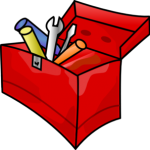This fall graduate students in “IS516: School Library Media Center” are participating in bimonthly Twitter chats. The chats are based on the pull quotes from chapters in Maximizing School Librarian Leadership: Building Connections for Learning and Advocacy (ALA 2018).
We invite you to join us our chat on Monday, October 28, 2019 from 7:00 to 7:30 p.m. Central Time. Chat questions are posted on this blog on the Wednesday before our Monday chats.
October 28, 2019: #is516 Twitter Chat: Assessment
“The integration of authentic learning tasks with diagnostic assessment and project monitoring is a powerful education instrument for [instructional] change and student achievement” (Moreillon, Luhtala, and Russo 2011, 20).
Assessment to Improve Learning
Assessment must always be conducted in the service of learning. When educators conceive of learning as an on-going journey that students and educators take together, they can keep their focus on assessments as measures of both students’ development and educators’ effectiveness. School librarians can maximize their instructional leadership by developing assessment tools, assessing student learning outcomes, and reflecting on the effectiveness of their instruction with coteachers, who are trusted colleague. These activities lead to evidence-based practice.
During coplanning, classroom teachers and school librarians must determine “how” knowledge, literacies, skills, and dispositions growth data will be collected, analyzed, and used to improve schooling for future ready students. Educators use formative and summative assessments and reflection activities to measure student growth.
Formative assessments monitor student growth and provide students with timely feedback so they can improve their work. Formative assessments also inform educators’ subsequent instructional decisions.
Educators use summative assessments at the end of an inquiry unit and are often represented as final project grades. Reflective activities integrated throughout the inquiry process help students understand their own learning process and improve their ability to transfer learning to new contexts.
Rather than using traditional standardized, multiple choice, and fill-in-the-blanks tests to assess students’ content knowledge, educators use performance-based measures to assess how students apply future ready learning in real-world, authentic contexts. The effectiveness of performance-based assessments is determined by how well students can use them to guide their learning process and self-assess their progress as well as their final product or performance.
#is516 Chat Questions
These are the questions that will guide our chat (for copy and paste).
Q,1: Why is self-assessment important for students? #IS516
Q.2: How do educators assess students’ dispositions? #IS516
Q.3: What would you ask a supervisor to observe during classroom-library collaboration for instruction? #IS516
Q.4: What are your strategies for reflecting on your own instructional practice? #IS516
Please respond with A.1, A.2, A.3, A.4 and bring your ideas, resources, experience, questions, and dilemmas to our conversation so we can learn with and from you!
For previous chat questions and archives, visit our IS516 course wiki page.
Thank you!
Work Cited
Moreillon, Judi, Michelle Luhtala, and Christina Russo. 2011. “Learning that Sticks: Engaged Educators + Engaged Learners.” School Library Monthly 28 (1): 17-20.










